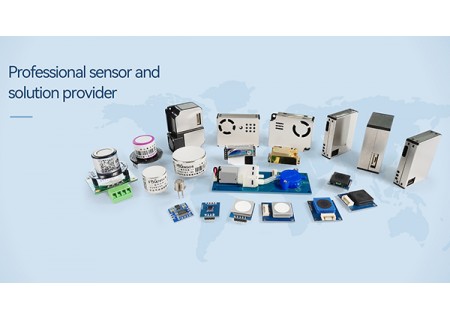What is a PID sensor?
-500x500.jpg)
The principle of photoionization (PID) sensor is simply to use a high-voltage alternating electric field to ionize certain inert gases to produce ultraviolet light, which has a higher energy than visible light, and it will ionize the gas into positively charged ions and negatively charged ions, and then we use electronics to detect how many of these ions are present, thus determining the concentration of the gas being measured.
PID is capable of detecting compounds, especially volatile organic compounds (VOCs), at the parts per billion (ppb) to parts per million (ppm) concentration levels. It complements non-dispersive infrared, electrochemical, and catalytic combustion gas sensors and is one of the more technically advanced and expensive gas detectors.
The role of PID sensors in VOC detection
PID TVOC Sensor can detect very low concentrations of volatile organic compounds (VOC, Volatile Organic Compounds) and other toxic gases. Many of the hazardous substances involved in accidents are VOCs (VOCs include, among others, organic chemicals, fuels, oils, lubricants, greases, degreasers, solvents, paints, plastics, and resins. Involving benzene, organic chlorides, Freon series, organic ketones, amines, ethers, alcohols, esters, petroleum hydrocarbon compounds, etc.). PIDs, which are extremely sensitive to VOC detection, have an irreplaceable use in emergency incident detection.
How does PID work?
A PID uses an ultraviolet (UV) light source to break up organic matter into positive and negative ions (ionization) that can be detected by a detector. The detector measures the charge of the ionized gas and converts it into a current signal, which is amplified and displays the 'PPM' concentration. After being detected, the ions recombine to become the original gas and vapor.PID is a non-destructive detector that does not "burn" or permanently alter the gas to be measured so that the gas detected by the PID can still be collected for further measurement.
What is PID?
A Photo Ionisation Detector (PID) uses the high energy of UV photons to ionize gaseous substances and then measures the weak electric current generated by the ionization of the substances to calculate the total amount of ionized gas in the air.
How is a PID sensor constructed?
Its structure consists of a UV light source, a pair of high-frequency electric field generators, a pair of electron-collecting electrodes, and a weak current-to-voltage circuit. The UV light ionizes the gas, which releases electrons, which are collected by the electron collection electrodes and turned into a voltage signal recognized by the analog-to-digital converter by the weak current-to-voltage circuit.
Not all gases can be ionized, but most VOCs are easily ionized, that's because the ionization energy is relatively low.
What are the advantages of PID sensors?
The advantages include.
1. very low concentrations of VOCs can be detected with a relatively small sensor size;
2. low power consumption;
3. low temperature dependence.
What are the disadvantages of PID sensors?
Disadvantages include:
1. PID bulbs are prone to leakage and failure;
2. high influence of humidity;
3. the signal is non-linear and requires calibration at multiple concentration points;
4. can only measure the total amount of VOC.







-450x320.jpg)



%20Sensor%20FS4NDIRR454B%20(2)-450x320.jpg)